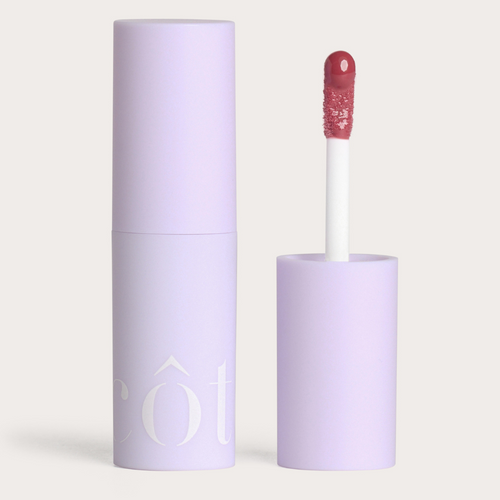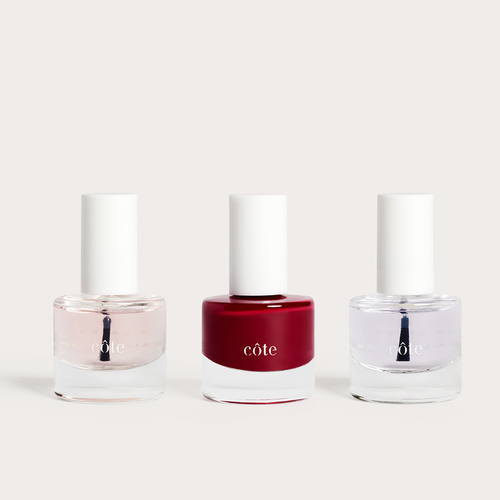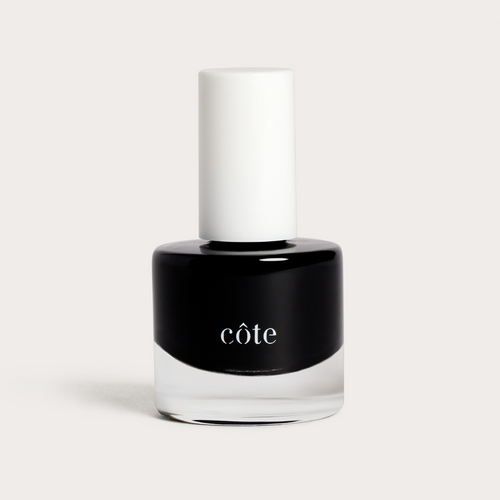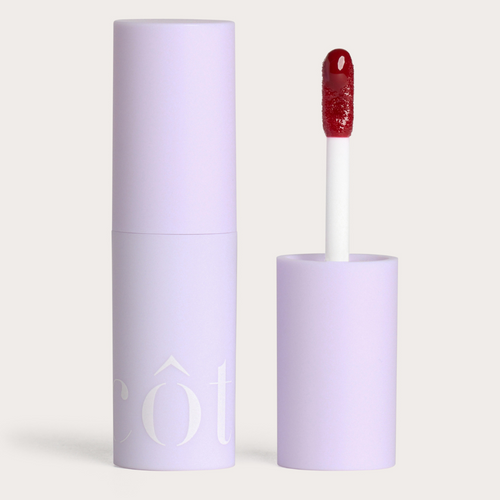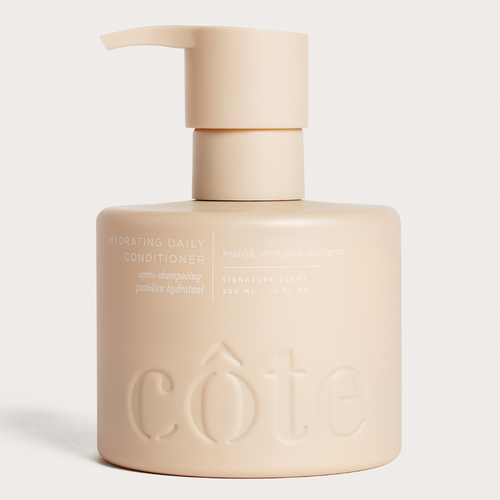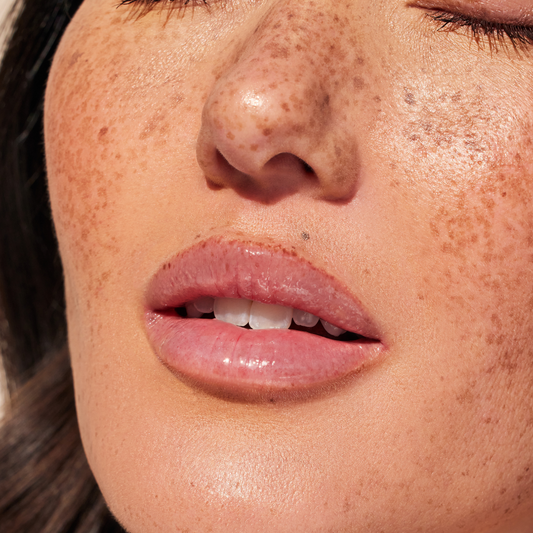Nail polish removers contain a wealth of harmful chemicals that can dehydrate your nails, as well as irritate the surrounding skin. The main ingredient in nearly every nail polish remover is acetone.
Acetone is a harsh chemical that can decrease the overall strength of your nails over time. Fortunately, with new research highlighting the devastating impact that acetone can have on nails, various new and alternate methods of removing nail polish have arisen.
This guide will explain the benefits of these innovative methods, and discuss the best way to remove polish and stubborn stains.
13 Ways To Remove Nail Polish Without Acetone
We have detailed below the different methods that you can use to remove nail polish without using acetone.
Best Non-Acetone Nail Polish Remover
Côte's Take Off Nail Polish Remover is the most effective non-acetone solution to safely remove nail polish!
Using essential oils that support nail hydration and protection, the remover is incredibly less drying than the traditional acetone solution.
With wild sea rose and dune, our nail polish remover provides a gentle resolution. We also offer premium Takeoff Towels, a boxed nail polish remover, complete with 8 individual towels for maximum on-the-go convenience.
Vinegar and Orange Juice
White vinegar and orange juice can be combined to produce a successful nail polish remover due to their acidity levels.
Mix an equal amount of natural orange juice with vinegar into a small bowl. Using a cotton ball, press the mixture onto your fingernails and hold for 10 to 15 seconds.
Once the nail polish starts to soften, gently blot the cotton ball over the leftover polish to remove it.
Lemon
When using lemon, you can either choose a fresh slice of lemon juice as your nail polish remover.
If using a lemon slice, gently rub the wet parts over the nail polish for about a minute. Then, using a Q-tip or paper towel, firmly rub the polish off using an upwards motion, avoiding the skin around your nails to prevent irritation.
When using lemon juice, saturate a cotton ball and hold it against your fingernail until the nail polish softens. You will then be able to easily rub the polish away.
Soy-Based Removers
A soy-based remover is a non-acetone alternative for taking off nail polish. As soy is not as harsh as acetone, it will generally take a little more time to remove stubborn or thick paint.
Apply this remover to a cotton pad and allow your nails to soak in it for around 30 to 45 seconds. Next, take an old toothbrush and gently exfoliate the nail polish.
Alcohol and Alcohol-Based Products
An alcohol-based product, including rubbing alcohol, cosmetics, or general household products, can effectively remove nail polish.
Perfume
A perfume that contains alcohol can also be used to remove nail polish, though for some the scent may be overwhelming. Simply empty some of your perfume onto a cotton pad or paper towel and rub it across your nails. The polish should lift in just a few minutes.
Hair Spray
To remove nail polish using hairspray, it has to be aerosol-based. Hairspray is an effective remover due to its alcohol content, with bottles usually containing around 25 to 50% alcohol. Therefore, it is best to use one that is on the higher percentage side.
You will first need to saturate a cotton ball by spraying it completely in hairspray. Immediately place the cotton on your fingernails to soak the polish. Gently massage away the varnish after 10 to 20 seconds.
Hand Sanitizer
Nowadays, everyone has access to hand sanitizer! While the main use of hand sanitizer is to protect you against harmful bacteria, it is also a suitable alternative to acetone-based nail polish remover even for a stubborn glitter polish.
To apply, simply pop some onto a cotton ball and hold them against each nail for 10 seconds before rubbing off. The average hand sanitizer contains 60% alcohol, and as alcohol is a solvent, it will break down the nail polish to allow easy removal.
Deodorant
Using an aerosol deodorant, spray the contents directly onto your nails and immediately wipe away the nail polish using a cotton pad. This method may take a bit of elbow grease if you are using particularly old polish, so take your time and reapply the deodorant as needed.
Make sure you are in a well-ventilated room when carrying out this method as inhaling too much-perfumed deodorants may be overwhelming and cause headaches.
Toothpaste
Toothpaste is another great alternative to acetone-based removers, as it is a common household product. It can remove nail polish well due to the ingredient ethyl acetate, which is frequently found in traditional nail polish removers.
Pop a pea-sized amount of toothpaste onto an old toothbrush and scrub over any toe or fingernail polish. Allow it to sit for around 10 to 15 seconds before cleaning away with warm water.
While a basic toothpaste will do the trick, one containing baking soda will speed up the removal process.
Hydrogen Peroxide and Hot Water
Hydrogen peroxide is a mild antiseptic that is often used in cosmetic products to lighten areas of skin. It is safe to use on nails when diluted with water, but best to do so in a well-ventilated area to avoid excessive inhalation.
To dilute it, mix one part water with two parts hydrogen peroxide. Stir well before soaking your fingernails to loosen the polish. After around 30 seconds, gently remove the polish using a nail file.
Make sure that you file the polish softly to avoid damaging your nail bed.

Nail Polish
Using an old or new nail polish bottle can remove old nail polish stains. Paint a fresh coat onto each nail before wiping it off. For best results, apply and wipe off the polish one nail at a time. You will need to wipe off the newly applied polish fairly quickly to prevent it from sticking.
Ensure that you are not using a quick-drying polish variety as this will prevent the method from working.
This remedy may have to be carried out a few times as some nail polishes contain acetone, which is very difficult to remove.
Filing, Peeling, or Chipping
You may find that your manicure starts naturally filing, chipping, or peeling due to exposure to external elements. If this is the case, you may be able to scrap or pull it off using your fingers or a nail file.
This method is not ideal as it strips the nail plate of delicate layers, which help protect the overall health of your nail. This process is also not exact and may not take off all of the polish. While it may be tempting to keep filing to reach the stubborn areas, over-filling can cause nail bed harm and irritation.
Post Removal Care
Some of the slightly more unconventional ways to remove nail polish can be extremely drying to your nail beds and cuticles. Consequently, you will want to make sure that you practice great post-removal care to restore the health of your nails.
Moisturize
Alcohol-based products can dry, therefore, you want to replace the moisture in the nail area. Always wash your hands and use a hand moisturizer to protect your skin after using unconventional polish removers.
Cuticle Oil
Cuticle oil can help restore the healthy appearance of your nails by promoting growth and hydrating the nail cuticle. Cote's Organic Argan Oil can soften cuticles for a natural boost.
Hydrate
Keeping your body hydrated will help to keep your nails feeling and looking healthy, so make sure to drink plenty of water.
Moisturizers with vitamin E and vaseline-based products will also help to soften brittle or dry nails.
Conclusion
In summary, there are many ways that you can take off your nail polish when accessing remover isn't possible! It's important to keep in mind that these methods may take longer to fight old nail polish stains, especially if it contains acetone.
Côte’s non-acetone nail polish remover provides a safe, toxin-free alternative to traditional nail polish removers. Côte provides safe, transparent, quality products, with all of our polishes free of major toxins and allergens that are often associated with nail polish.

Start Your Self-Care Journey Here
VIEW ALLThe Ritual, Peptide Enriched Lip Treatment

The Ritual, Peptide Enriched Lip Treatment
Nourishing Hand & Body Wash





